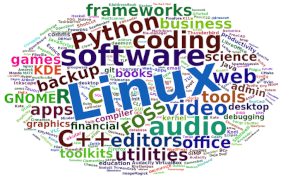Last Updated on April 21, 2023
There are thousands of Linux commands so it’s impractical to provide a comprehensive list. Instead we focus on many of the commands you will need at some time or another.
Don’t be concerned by the sheer number of commands as you’ll probably only use a small number of commands on a regular basis.
To get help on a command type: man command_name which displays the documentation. We also recommend you use tldr, as it offers simplified documentation. There are other alternatives to man covered in this article.
Given the number of commands we’ve split the commands into 6 pages.
| Commands: A-D | |
|---|---|
| adduser | Create a new user |
| age | Utility to encrypt and decrypt |
| apt | Package management utility for Debian/Ubuntu based distributions |
| arch | Display the name of the system architecture |
| awk | Versatile programming language for working on files |
| bc | Arbitrary precision calculator language |
| cat | Print and concatenate files |
| chgrp | Change group ownership of files and directories |
| chroot | Run command or interactive shell with special root directory |
| cksum | Calculates CRC checksums and byte counts of a file |
| cmp | Compare two files byte by byte |
| comm | Select or reject lines common to two files. Both files must be sorted. |
| cp | Copy files and directories |
| crontab | Schedule cron jobs to run on a time interval for the current user |
| csplit | Split a file into pieces |
| cut | Cut out fields from stdin (standard input stream) or file |
| date | Set or display the system date |
| dc | An arbitrary precision calculator. Uses reverse polish notation (RPN). |
| dd | Convert and copy a file |
| diff | Compare files and directories |
| dirname | Calculates the parent directory of a given file or directory path |
| du | Disk usage: estimate and summarize file and directory space usage |
Pages in this article:
Page 1 – Commands: A-D
Page 2 – Commands: E-H
Page 3 – Commands: I-M
Page 4 – Commands: N-R
Page 5 – Commands: S-U
Page 6 – Commands: V-Z
All articles in this series:
 Read our complete collection of recommended free and open source software. Our curated compilation covers all categories of software. Read our complete collection of recommended free and open source software. Our curated compilation covers all categories of software. Spotted a useful open source Linux program not covered on our site? Please let us know by completing this form. The software collection forms part of our series of informative articles for Linux enthusiasts. There are hundreds of in-depth reviews, open source alternatives to proprietary software from large corporations like Google, Microsoft, Apple, Adobe, IBM, Cisco, Oracle, and Autodesk. There are also fun things to try, hardware, free programming books and tutorials, and much more. |
